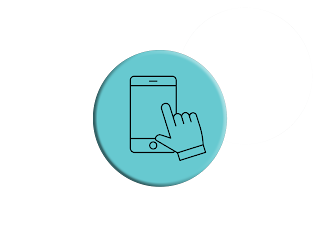الشواهد والمنشآت الجنائزية / Markers of Sacred Space
الشواهد والمنشآت الجنائزية
المركب المرسومة هي العشاري الذي يعلو قبة الإمام الشافعي ويقال أنه يأخذ شكل المركب نسبة الى ما وصف به الشافعي بأنه <بحر العلم> وقد يكون أيضا نسبة الى الاعتقاد أن أولياء الله الصالحين لديهم القدرة على الإبحار بالزمان والمكان والتواجد في أماكن غير متوقعة في أوقات غير منطقية. ويعد العشاري علامة لتمييز القبر مثله مثل العمود ذو غطاء الرأس المتميز أعلى تراكيب حوش الباشا والكسوة أعلى تركيبة السيدة كلثم.
يمكننا القول أن هناك ثلاث مكونات أساسية للأماكن ذات البركة؛ قصة ما تحكي عن كرامة أو بركة أو فضيلة؛ طقوس تتم بصفة دورية أثناء الزيارة مثل الدعاء أو الصلاة أو التلاوة؛ وعلامة أو شاهد يميز المكان ويحدده.
تمنع بعض الآراء سلفية الشواهد على القبور فيما عدا علامات بسيطة مثل بروز سطح القبور قليلًا عن الأرض أو وضع حجر صغير. لكن من النادر أن يتم اتباع هذه الآراء. وللشواهد والمنشآت أعلى القبور أشكال عدة، فهناك العمود واللوح من الرخام أو الحجر الكدان والقبر المسنم والهرمي والمصطبة و التركيبة والمقصورة والمحراب والجوسق والقبة. وقد تسمى مجموعة القبور بالحوش أو الحومة أو حتى الزريبة. وقد يكون القبر جزءًا من مبنى ديني مثل الخانقاة أو المدرسة أو مبنى خيري مثل السبيل والكتاب. وقد تحوي القرافة تجمعات من المباني السكنية جنبًا الى جنب القبور والقباب.
يمكننا القول أن هناك ثلاث مكونات أساسية للأماكن ذات البركة؛ قصة ما تحكي عن كرامة أو بركة أو فضيلة؛ طقوس تتم بصفة دورية أثناء الزيارة مثل الدعاء أو الصلاة أو التلاوة؛ وعلامة أو شاهد يميز المكان ويحدده.
تمنع بعض الآراء سلفية الشواهد على القبور فيما عدا علامات بسيطة مثل بروز سطح القبور قليلًا عن الأرض أو وضع حجر صغير. لكن من النادر أن يتم اتباع هذه الآراء. وللشواهد والمنشآت أعلى القبور أشكال عدة، فهناك العمود واللوح من الرخام أو الحجر الكدان والقبر المسنم والهرمي والمصطبة و التركيبة والمقصورة والمحراب والجوسق والقبة. وقد تسمى مجموعة القبور بالحوش أو الحومة أو حتى الزريبة. وقد يكون القبر جزءًا من مبنى ديني مثل الخانقاة أو المدرسة أو مبنى خيري مثل السبيل والكتاب. وقد تحوي القرافة تجمعات من المباني السكنية جنبًا الى جنب القبور والقباب.
تجول بالقرافة وابحث عن التالي:
تركيبة يعلوها شاهد
حوش
قبة
حوش
قبة
مقبرة بها استراحة للسكن
قبة ملحقة بجامع
قبة ملحقة بجامع
هذه العلامات التي تميز فرغات المقابر عن الفراغات الدنياويه.
 |
للدخول الي اللعبة أضغط هنا |
Markers of Sacred Space
The boat drawn here is the finial of the dome of al-Imam al-Shafi’i right in front of you. Its shape is said to refer to al-Shafi’i being a “sea of knowledge”. It may also refer to the attributes of the walis (the men and women of God) who are believed to transcend time and space – sailing through it and appearing in unlikely places at unlikely times. The boat is a marker of sacred space, as is the headgear above the tombstones in Hawsh al-Pasha and the white lace shroud on the cenotaph of Kulthum.
It can be argued that the marker of one of three ingredients necessary for the making of a sacred space; the other two being narrative (a story of blessing, exceptional virtue or a miracle for example) and ritual (certain rites of visitation, prayer or supplication).
Although in the most orthodox version of Islam, the only acceptable grave marker is a small mound or an undecorated stone, one rarely finds cases where this is strictly adhered to. The cemeteries of Cairo come in a variety of shapes and sizes. They ranged from graves marked by tombstones, cenotaphs or canopies in an open space, to funerary enclosures that may contain mausolea to mark the dead, to elaborate complexes with religious establishments such as madrasas or khanqahs, to pockets of non-funerary clusters.
It can be argued that the marker of one of three ingredients necessary for the making of a sacred space; the other two being narrative (a story of blessing, exceptional virtue or a miracle for example) and ritual (certain rites of visitation, prayer or supplication).
Although in the most orthodox version of Islam, the only acceptable grave marker is a small mound or an undecorated stone, one rarely finds cases where this is strictly adhered to. The cemeteries of Cairo come in a variety of shapes and sizes. They ranged from graves marked by tombstones, cenotaphs or canopies in an open space, to funerary enclosures that may contain mausolea to mark the dead, to elaborate complexes with religious establishments such as madrasas or khanqahs, to pockets of non-funerary clusters.
Look around you as you walk and try and find the following:
Solitary cenotaph with tombstones
Walled enclosure
Domed tomb
Tomb with residential annex
Mosque with tomb attached
All of these are markers that distinguish funerary space from secular space.
Solitary cenotaph with tombstones
Walled enclosure
Domed tomb
Tomb with residential annex
Mosque with tomb attached
All of these are markers that distinguish funerary space from secular space.
 |
Click Here To Play |

